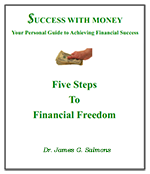An important part of our financial lives, unfortunately, must involve protecting ourselves from loss, including identity fraud. For that reason proactive identity theft protection steps must be taken to avoid financial loss.
The good news is that when it comes to identity theft, you can do a lot to protect yourself without incurring great expense.
Basic Identity Theft Protection
People are aware of the basic forms of financial protection in other areas such as insurance and the like, but even though they are generally aware of identity theft most people seem to do little to avoid losses through fraud. As a result identity theft and identity fraud are fairly rampant, at least in America.
Still, most people have heard about identity theft and adopted some of the primary ways to protect themselves from identity fraud.
- They know not to give out their Social Security number to anyone who does not properly need it.
- They may shred bank and legal papers that include information like bank account numbers.
- They do not give out personal information on the phone unless they are sure who they are talking to (usually meaning they placed the call).
Aggressive Steps to Protect Your Identity
There is a lot more we can and need do. With a little thought and care on our part a lot of the current identity theft and fraud could be intercepted. But we need to think about the many options thieves have; there are dozens of methods they use to get your data.
Most people are not really as careful with receipts as they should be. Many receipts have our credit/debit card numbers printed out in full. If you need to keep receipts file them in a safe place; if you don't need to keep a receipt, shred it (don't toss it in the trash). So called “dumpster diving” is still a major source of information for identity thieves.
When disposing of a computer either use a special program that wipes all data or remove and destroy the hard drive (not an easy chore—boy are those things tuff!). Remember that deleting files on your hard drive does not remove anything, it just marks a file as unwanted.
Credit cards offer thieves many options. It is amazing that an individual may take extraordinary precautions to shred all their monthly paperwork that might be found at the dump but do not think twice about giving a waiter they have never seen their credit card to take into the back room where it is totally out of sight, the kind of situation which lends itself easily to skimming.
NOTE:
In spite of people’s fears of doing business online, using online billing and financial statements can be safer than using the mail (if you learn how to make good passwords). More than 10% of identify theft is achieved through stealing mail. Anyone who handles your physical mail has an opportunity to steal your information.
Think about the information you post in public places like Facebook! How hard would it be for someone to get those favorite security answers they need, like “Who was the best man at your wedding?” or “What was the make of your first car?”
One of the newer and growing dangers is the theft of information using so called contactless readers using RFID (radio-frequency identification). These can gather information from several meters away from passports, for example.
Keep Learning to Keep Safe
The above tips are just calling attention to the scope of the problem. The bad guys keep trying new scams. Fortunately, there are many places where you can learn more about how to do it effectively.
Pay attention to the news. Every few weeks you will hear a story about some new way people are being taken advantage of by a new scam of some type. Many of them involve identity fraud of some kind. Don't become one of their victims.
North Star Mutual Insurance Company, with whom I just happen to have an insurance policy, has a remarkable site at their Identity Theft 911 Knowledge Center. It offers some of the best help I have seen in understanding and developing the skills you need to avoid what has proven to be a horrific experience for thousands of people every year. (Remember, you can read the information without buying the insurance, as with other product sites.)
Block the Identities Thieves Out
After doing what you can personally to prevent identity thieves from getting your financial information, you can take a further step by preventing them from accessing your credit information.
For a very small charge, only $5.00 for each of the three credit bureaus in Minnesota where I live, you can put a freeze (or block) on your credit report. That way if anyone tries to use your identity to get credit information they will be blocked from doing so.
Along the same lines, check your bank accounts and credit card accounts regularly. I not only look over my printed statements, I check my accounts online regularly.
If you see anything out of line, especially a charge you did not make, contact your financial institution immediately and put a hold on the account. They will give you a new number and you will be out no expense.
Protection from the dangers of contactless credit cards is somewhat problematic. Aluminum wallets offer good protection and there are also thin sleeves into which you can place them. Not carrying more than one card unless absolutely necessary is a good idea anyway and keeping up with your account is always critical.
Conclusion
There were a reported 12.5 million cases of identity theft reported in 2012. It is also the most common complaint to the FTC. Don’t join thee victims by neglecting to develop your skill in avoiding and stopping identity theft with your personal DIY identity protection plan.










